His among strangers, strangers among his
82 BARED OFFICERS
Everything is great with them - new academic badges on their chests, and brilliant career prospects ahead. But graduates will never come together again. In a matter of weeks, they will go to the front of the First World War, from which not all will return. And those who live to 1917 will be on opposite sides of the barricades.
1. In the center, as it should be, - the leadership of the academy, headed by its chief, an approximate emperor, general, Prince Pavel Engalychev.
2. To his right, the future General Pavel Ryabikov is one of the developers of the theory of national military intelligence, the chief of staff of the Eastern White Front, who graduated from his days in Prague.
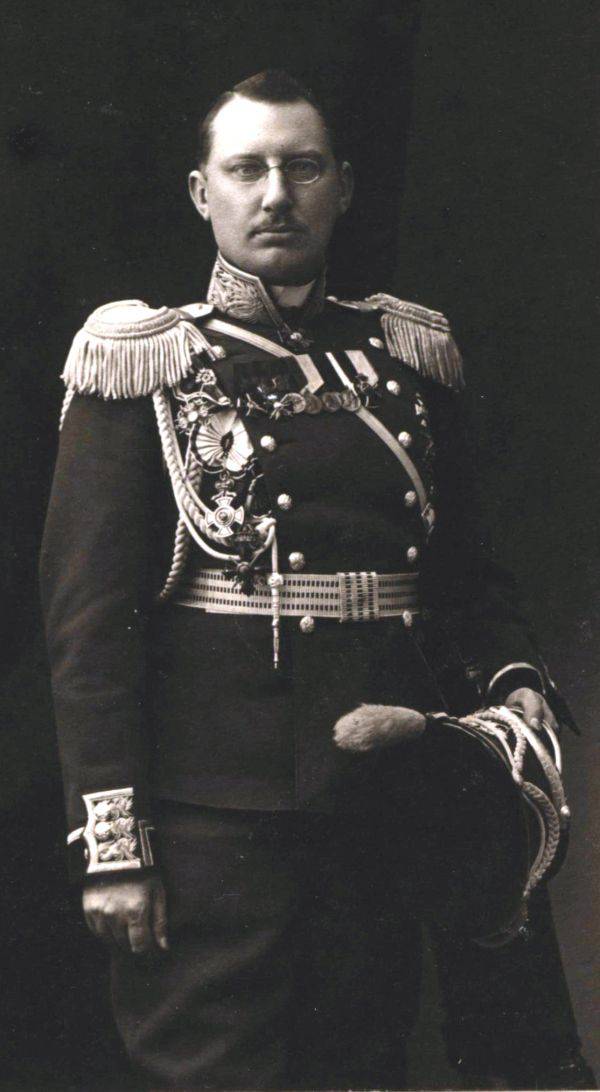
3. To the left of the head of the academy is the ruler of affairs, Professor Alexei Bayov is a major military historian who passed from the Red Army to the White and died in Estonia.
4. Next to him, Alexander Baltiysky - the future general and military specialist of the Red Army, an ally of MV. Frunze, subsequently shot.
5. Through one from Ryabikov, another future general, Professor Vasily Boldyrev. He commanded the 5 Army in 1917, participated in the white underground, led the anti-Bolshevik forces in Eastern Russia, but was removed by supporters of Admiral A.V. Kolchak. In Soviet times, he edited the Siberian Soviet Encyclopedia, left memories, was repeatedly arrested and shot in Novosibirsk in 1933.
6. Academy graduate Mikhail Stroyev (Richter), who owned the album, is in the fifth row (it is marked with an arrow in the photo). To the hero of the desperate aviation reconnaissance and machine-gun attacks were lucky - he managed to survive in the First World War and avoid reprisals due to the German surname in the Second. Became one of the founders of the Soviet Air Force. He died in the USSR at an advanced age, surrounded by honor and respect.
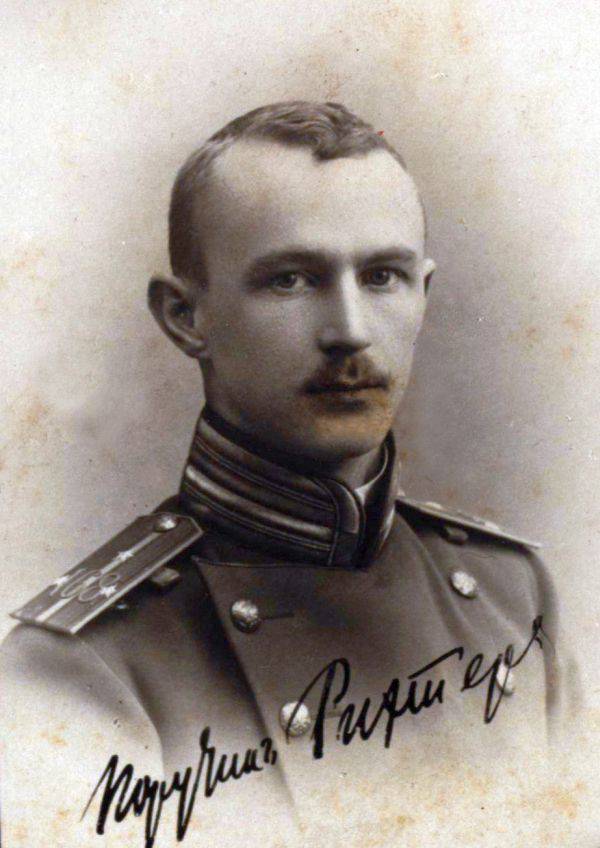
WHITE
7. To his left, in a cap with a bright band, another future general, only the White Army, Peter Burlin is an Orenburg Cossack, a hero of the First World War and the St. George Cavalier, a member of the White movement in Eastern Russia, who served in important posts in the Kolchak Headquarters and ended up living in Australian emigration . And the total release was given by five future Kolchak generals.
8. Next to Burlin is Fyodor Puchkov, a participant of the Siberian Ice Campaign and the Chief of Staff of the so-called Zemsky Rati, the remnants of the white armies that reached Primorye.
9. Slightly rested in the front row - Victor Oberyuhtin, chief of staff of the Eastern White Front. By a surprising coincidence, in five years, in the 1919 year, he will replace his academic teacher Ryabikov, who sits exactly above him.
10. Ivan Smolin-Tervand (he is in the fifth row) was the chief of staff of one of the shock Kolchak corps (General AS Bakich). Issued by the Mongols in red and shot in 1922 year.
11. The far left in the third row, Alexander Surnin - served during the Civil War in the academy.
12. Boris Ushakov (in the second row) did not manage to become a general - in August 1918, the officer was captured by the Reds on Baikal, tortured and cruelly killed. White repulsed the body of Ushakov, the remains were solemnly buried in Kansk, but after the Civil War the grave was destroyed.
13. A lot in the picture and the participants of the coming White movement in the South of Russia. In the top row - the future Colonel Pavel Dorman, George Knight, 2 quartermaster general of the headquarters of the Wrangel army.
14. And the second general in the third row captures the future General Ivan Polyakov, who became the Civil Head of the Headquarters of the Don Army under Ataman P.N. Krasnov.
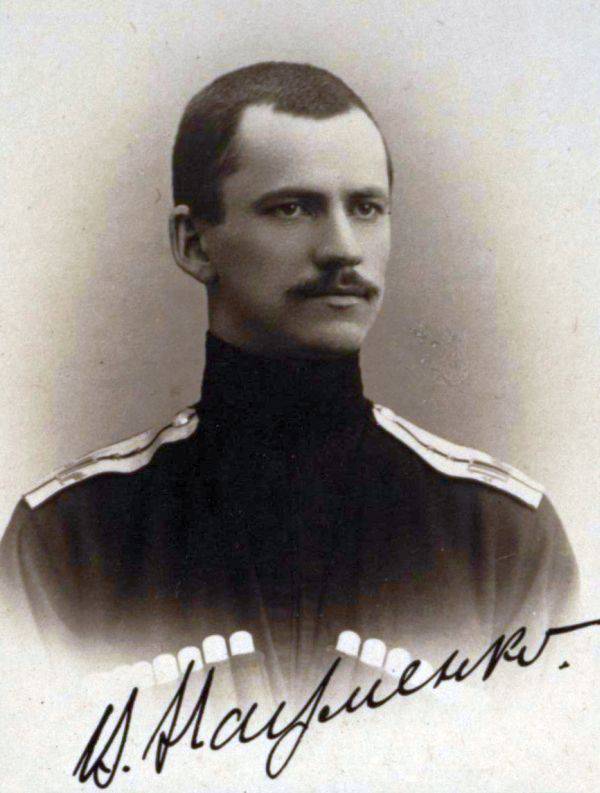
Vyacheslav Naumenko, who will be a knight of Georgievsky, also looks into his future weapons and the Kuban military chieftain. In the photo, he is reclining next to his future opponent in the Civil War, Semyon Pugachev and the only one dressed in the Circassian traditional for the Kuban. Naumenko became one of the prominent figures of the White movement in the South of Russia, participated in the landing of the whites on Taman in the summer of 1920. He died in 1979 year near New York, having outlived all his classmates and in general all the pre-war academy graduates.
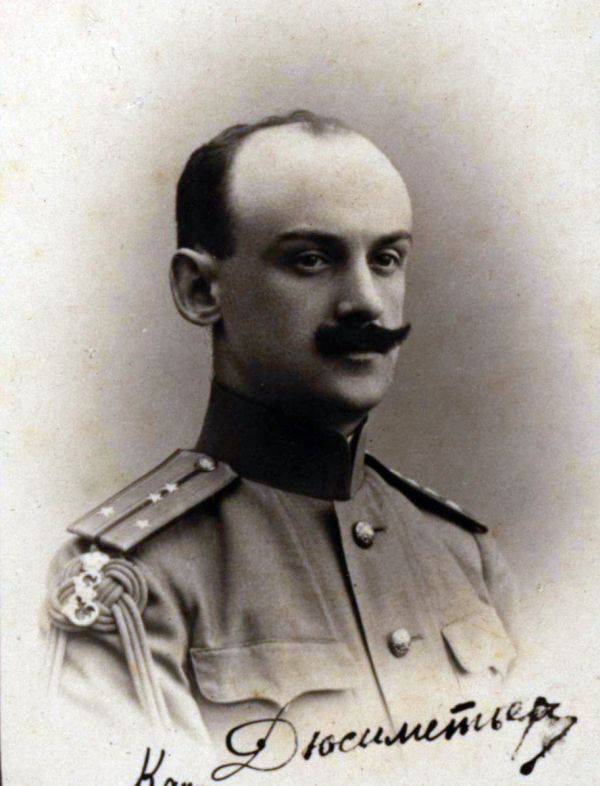
In the first row - the future St. George Cavalier, Colonel Leon Dyusimeter. The son of a Swiss officer, who left the encirclement in East Prussia in the same 1914 with a group of 2 of the Russian army headquarters, one of the organizers of Russian military aviation and an active participant in the Kornilov movement in 1917 ... Dyusimeter had to take part in the White movement and in the South and in Eastern Russia, and died in China.
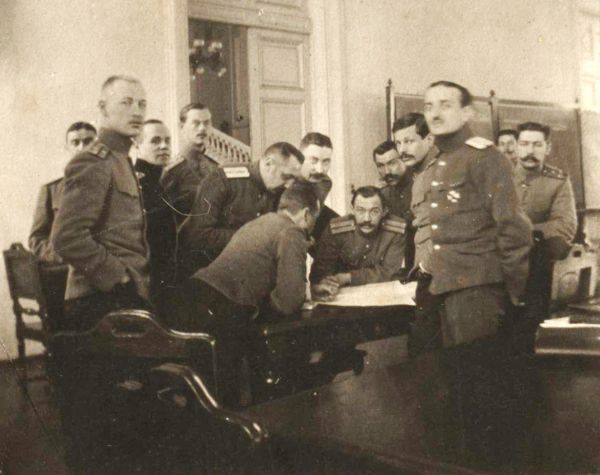
RED
17. A lot in the picture and future Soviet military leaders. In addition to Stroev (Richter), this is the famous Augustus Cork (he is in the third row). Estonian by origin, commander of the 15 and 6 armies, one of the winners of Yudenich, a participant of the failed attack on Warsaw on the summer of 1920, a gentleman of two orders of the Red Banner and Honorable revolutionary weapons for the assault on Perekop and Yushuni and the liberation of Crimea. It was the shock group 6 Army of Cork in November 1920, despite 12 degree frost and piercing wind, made the famous passage through Sivash Bay to the waist in the water, striking the rear of the Perekop White position and thereby ending the large-scale Civil War in Russia. Later - the head of the Military Academy named after M.V. Frunze. He was shot in 1937 year, along with Marshal M.N. Tukhachevsky. An early photograph of a military leader is a great success for historians.
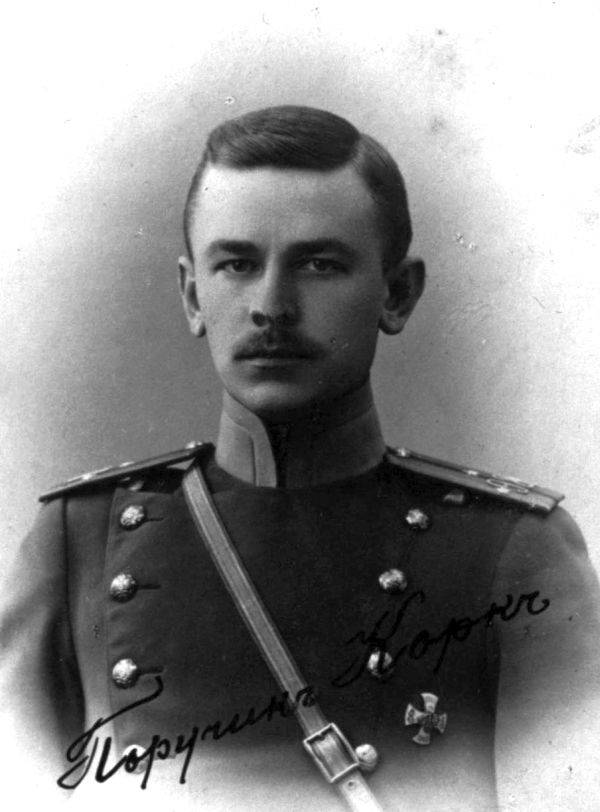
18. Semyon Pugachev went on the revolutionary path already in 1917, becoming a member of the Pskov Soviet Department. In the Red Army he served in staff positions. The posts of the chief of staff of the Caucasian Front, the Separate Caucasian Army and the Commander of the Turkestan Front became the peak of his career. Pugachev developed operations to defeat Denikinians in the North Caucasus and eliminate Basmachist. Awarded the Order of the Red Banner. In 1931, he was arrested in the case of Vesna (one of the first mass trials against former officers), but soon released, again arrested in 1938. He died in the North Ural camp in March 1943. Cork, Pugachev and Alexei Gotovcev, the St. George Cavalier, and later a prominent figure in Soviet military intelligence, subsequently joined the Bolshevik Party, which was uncharacteristic of former officers.
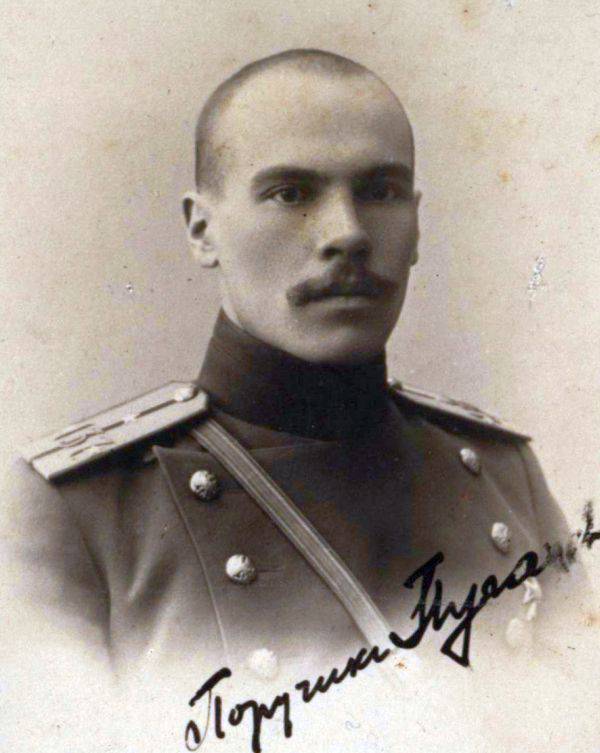
OPPONENTS
Agree, this photo can be viewed infinitely ...
19. To the left of Cork, the future holder of the St. George’s weapons, Stepan Zhagun-Linnik. During the Civil War, the officer had the misfortune to be in Ukraine: he was arrested under the hetman, under the Petliurists, under the whites and under the red. After the Civilian, he got a disability, clutched at any job to just survive: he was the commandant for the protection of sugar factories, a fitter, a technician for the repair of central heating and ventilation, worked as a deputy engineer in the design bureau. Later, he was recruited by the OGPU, and in 1937-m was shot.
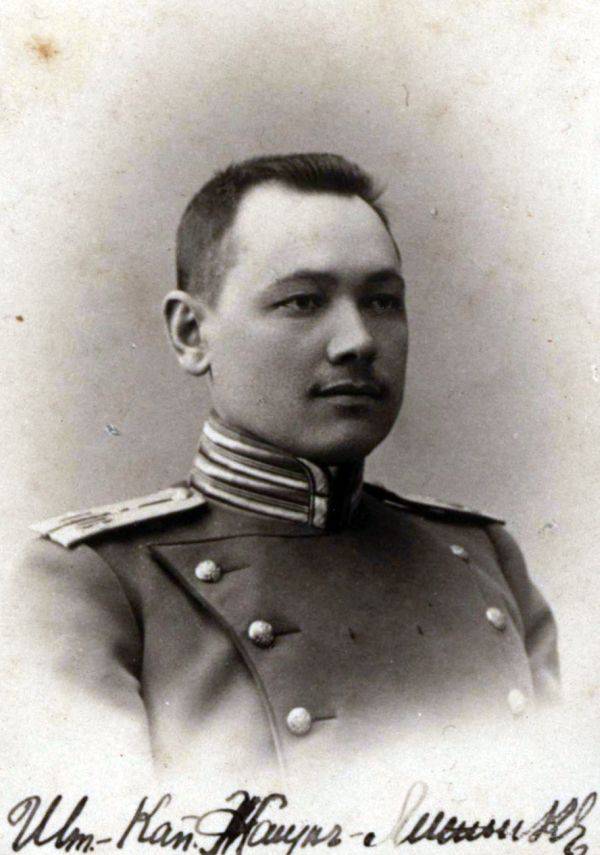
20. In the fourth row - the future Colonel Anton Laurits, who managed to serve both red and white. As a result of his transition to the enemy on the night of October 11 1919, White was able to capture the headquarters of the Red Army 55 Infantry Division (Laurits was chief of staff) and executed the division commander A.V. Stankevich (posthumously awarded the Order of the Red Banner and solemnly reburied at the Kremlin wall). After emigrating, Lauritz enlisted in the Estonian army.
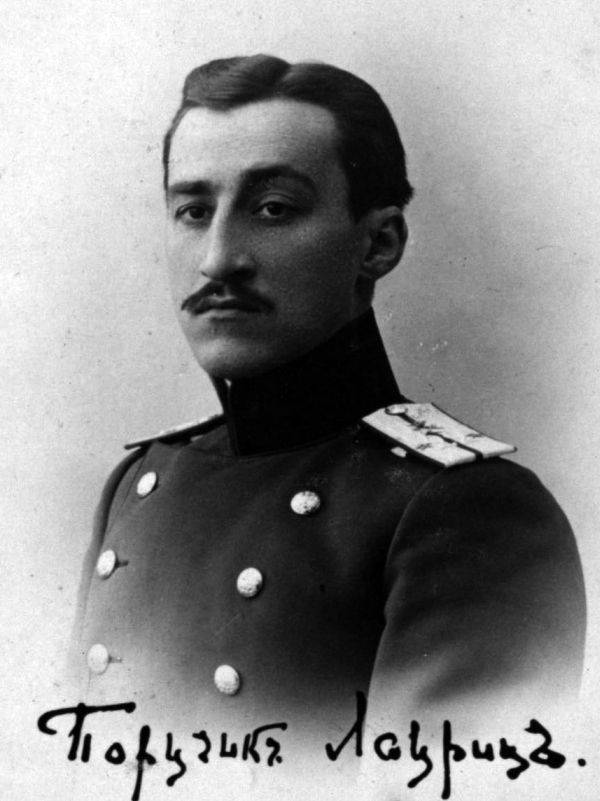
21. The far left in the front row - Vladimir Ozol (Waldemar Ozols) - the George Knight of the First World War, a veteran of the Estonian, Latvian and Lithuanian armies, a man who lost Latvian citizenship for participating in the Spanish Civil War as a brigadier general of the Republicans. Later - a resident of the Soviet military intelligence in France. At the end of his life, he returned to Latvia, where he died in the 1949 year.
22. On the other side of the "invisible front" in the years of the Second World War was the son of the Minister of the Interior, Peter Durnovo (in the second row). Ever since 1930, he became a resident of the Abwehr in Yugoslavia, collaborated with the Germans during the war years, and in 1945 died during the bombing of Frankfurt am Main.
23. In the third row - Alexander Slivinsky, who in 1918, will become the Chief of the General Staff of the Ukrainian state, Hetman P.P. Skoropadsky. At the academy he bore the name of Plum. A brilliant officer, the cavalier of St. George, the hero of the First World War, after the capture of power by the Petliurists, was forced to leave Kiev and settled in Odessa. When the red entered the city, he lived in an illegal situation. He waited for the arrival of the whites, but did not serve them for long. He emigrated to Canada. He died in 1953 year.
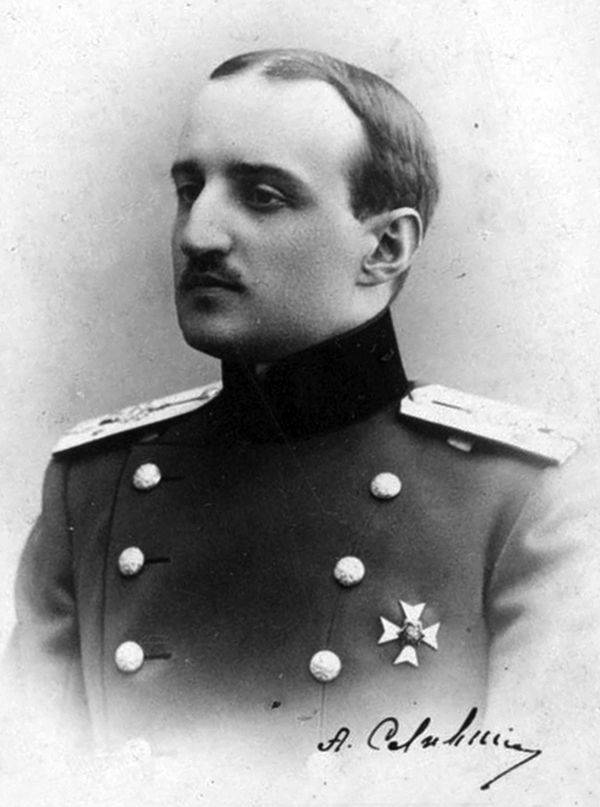
24. Among the graduates of the academy are white underground workers and participants in uprisings against the Bolsheviks. The future lieutenant colonel, monarchist Boris Svistunov in 1918, led a secret officer organization in red Saratov and transported officers to white ones. A schoolmate of Svistunov Felix Drobysh-Drobyshevsky was shot for participating in the Yaroslavl uprising.
The fellowship of fellow academics collapsed in 1917. Yesterday's friends became adversaries. "Red Wheel" was driven by the fate of these people, pulling the country into fratricide. Let's not forget about it, looking at the young, full of faith and hope of the person from 1914 year ...
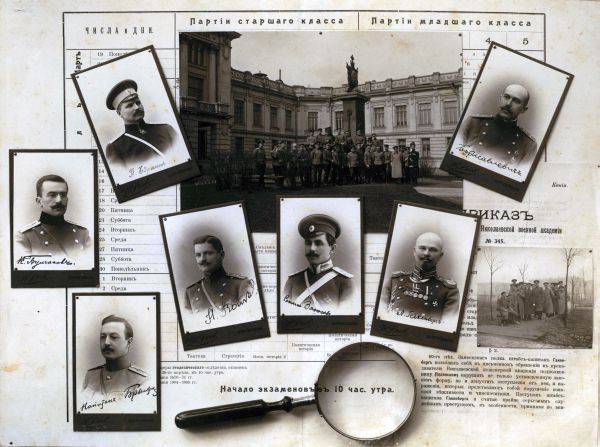
ONLY NUMBERS
"The shoulder straps have not yet been torn off and the shelves have not been shot ..."
The collected archived data allowed us to trace the fate of 69 graduates.
Three men died in the First World War (25. Alexander Vasyukov, 26. Vladimir Makukhin and the Transfiguration Alexander Chernyavsky who was returned to his regiment, who was killed in the first battle).
At least 64 graduates fought in Civil. At least two officers from participating in it evaded - their traces are already found in emigration. The whites, as well as the white underground in the Soviet territory consisted of an 53 officer, 27 people passed through the service in the Red Army, 17 were in Ukrainian formations, two passed through other national armies. A typical picture for the Civil War, when one officer could more than once switch from one side to another.
Not less than 36 people from pre-war graduation died in exile, far from their homeland, to whose service they dedicated their lives. But not everyone suffered the emigration. Wrangel General 27. Alexey Govorov returned to his homeland in the 1947 year, and through 20 years he died in Kiev.
Were shot and died in custody 11 officers from our snapshot. Four died in the USSR from old age and disease. The dates and circumstances of the death of the others are still unknown ...
Information